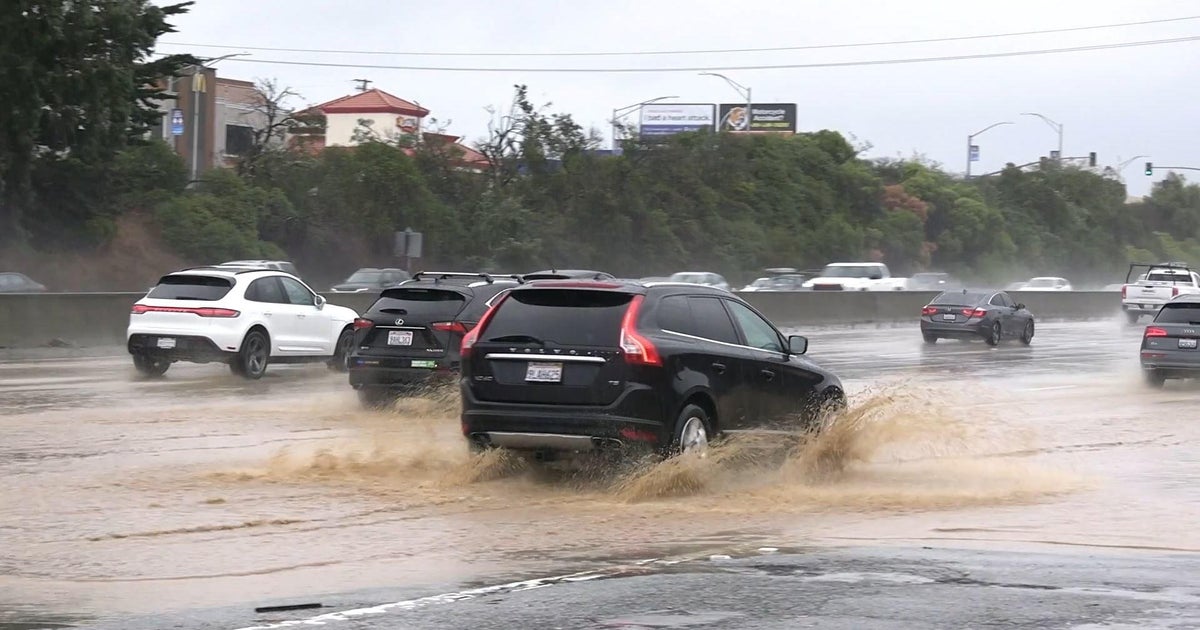Sinking Sidewalks In San Francisco's Mission Bay Not An Issue Near UCSF Medical Center
by Abigail Sterling and Max Darrow
SAN FRANCISCO (KPIX 5) -- There is a new twist in an ongoing investigation into sinking sidewalks in one San Francisco neighborhood known as "Little Venice."
As we first exposed, the sidewalks in Mission Bay on the south side of the Oracle Park are sinking, as much as a foot and more in some spots. Now we are learning this growing problem could have been avoided.
"It's clear, there's a problem," said David Mustelier. He lives in the Radiance, an upscale residential building in Mission Bay with waterfront views. But the view of the pavement is not so good, because the sidewalks are sinking.
"The gaps on the sidewalks are getting more substantial. We have one right outside of our doorway," said Mustelier.
Many other Mission Bay residents have noticed it as well around their buildings.
"It's a gap of approximately that much," said Lee Dixon, showing about a foot with his hands.
"You are like, wow, these are really enormous cracks!" said Jeannette Revel-Mauro.
But if you are walking around Mission Bay, there's one place where you won't be able to notice the sidewalks are sinking. We're talking about the four blocks around UCSF Medical Center at Mission Bay.
"For UCSF, patient safety is of the utmost importance," said Scott Shaver, design coordinator for Stantec, the building's architectural firm. "When we started design back in 2007, we worked with our geotechnical engineer and they helped us understand that the settlement would potentially be four inches. That's a big issue."
That's because Mission Bay, as its name suggests, used to be a bay that was landfilled. That's why all the buildings are anchored to bedrock. But the streets and sidewalks are not. And per the city - sidewalks are the property owner's responsibility.
So when it became evident that the sidewalks could become an issue around UCSF, the engineers on the job took a proactive approach.
"We worked with our civil engineers and landscape architects and structural engineers to develop what we called a hinge slab," said Shaver. "So what it is essentially is a bridge that goes from the front door of the building and out into site."
Shaver says it wasn't cheap, but the hinge slabs paid off. There's no noticeable sidewalk sinking problem around UCSF.
One engineering consultant we talked to is not surprised. "The client makes a difference. A client like UCSF would be more concerned about future risk and future expenses," said geotechnical engineer Robert Pyke who consulted for the UCSF project.
He says while the hospital was being built, several other condo buildings were also under construction in Mission Bay that he believes did not take similar proactive measures for the sidewalks. The result he says led to huge cracks, a visible contrast to UCSF.
"A commercial developer just wants to get the project built and for its performance to be adequate during the first ten years, while they might have some liability," said Pyke.
"The builder is responsible. The problem is you have a 10-year absolute limitations period," said attorney John O'Connor, who specializes among other things in construction defect cases. "That's why developers sometimes have champagne parties when the 10-year anniversary hits of a development."
In Mustelier's case, O'Connor says the Radiance opened in 2008 so the developer is off the hook and was likely under no obligation to disclose the potential sidewalk problem to condo buyers.
"Especially for something like a sidewalk which is probably not a danger to life. I would not expect them to have a duty to warn anybody about this," said O'Connor.
But some residents of Mission Bay still feel the city must bear some responsibility because the city funded the infrastructure in Mission Bay through public-private partnerships.
"We don't have the ability as homeowners to go after the people who might be responsible for poor work that was assumed by the city. Therefore now in my mind, the onus is on the city," said Mustelier. "There's a big problem here, why don't we deal with it?"
A semi-independent agency called the Office of Community Investment and Infrastructure negotiated the public-private contracts in Mission Bay and is still responsible for the maintenance of the streets. But the agency denies any responsibility for the sidewalks.



